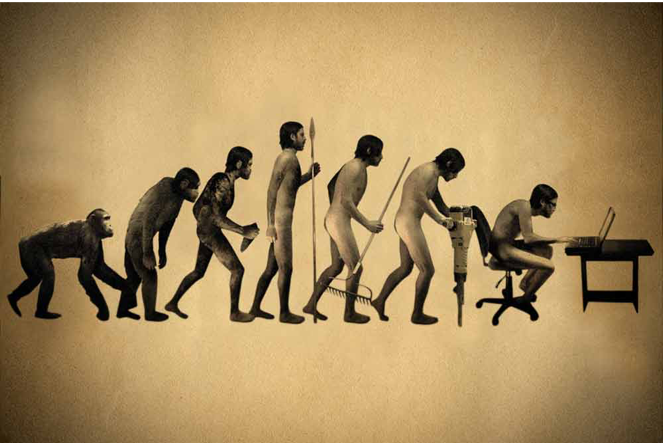Thank you for visiting the Resources Centre.
This website contains much free-of-charge educational content. You can print off any page or item that interests you. You have permission to use such copy and share it as a learning resource.
In addition, there are 32 practical implementation resources for use in making improvements in organisations. These resources may be purchased online and downloaded at a modest cost. They are designed for use by senior executives and leaders, organisation trainers, educators, developers, coaches, mentors, and internal and external consultants.
Cost
There are two pricing structures: a corporate rate (C) used by those who are employed in an organisation with a corporate budget, and a personal rate (P) for those who are self-employed and paying out of their own pocket. Buyers will be asked for this information when entering the shop. According to which of these categories you come under, you will find the prices and purchasing options shown further down this page.
Here is some further information about the resources that you may find helpful before entering the shop.
This should never be displayed !
Using the Resources (click to open)
Copyright (click to open)
Usage Rights
Resources bought and downloaded from the website may be reproduced by the purchaser for the use, study and education of the purchaser and departmental work unit colleagues, provided that its authorship and source is attributed to the Institute. The material cannot be distributed en masse across large divisionalised organisations or, say, to all a corporation’s managers. To indicate the permission granted, the named purchaser is shown on the bottom of each resource pdf.
Where it is a purchaser’s purpose to use the resources commercially directly with fee-paying clients, they must purchase from the website’s shop a £200 annually extended use licence.
The Institute’s resources may not be bought and re-sold for commercial gain.
Questions or Comments about the Resources Centre shop?

HOW TO CHOOSE WHICH ITEMS TO PURCHASE WHEN YOU ENTER THE SHOP
You will be able to choose items in these ways:
1. You can choose the full set of 32 resources at a special price
2. Predetermined Themed sets
You can select one or more of six themed sets that consist of clearly identified pre-designated resources chosen for you out of the total bank of 32:
- Core set (4 pre-designated resources)
- Learning and development set (5 pre-designated resources)
- Organisation development and design set (8 pre-designated resources)
- Change and improvement set (6 pre-designated resources)
- Performance management set (6 pre-designated resources)
- HR set (3 pre-designated resources)
3. Individual Choices
Or you can choose for yourself the individual resources from the bank of 32 that interest you.
You can buy all your preferred resources this way, or you can top up themed sets with these additional personal choices.
You can buy individual resources singly or in discounted bundles. The discount will be automatically applied to bundles when the threshold number of items in your cart is passed.
PRICING SCHEDULE
THEMED SET PURCHASES
| NAME OF THEMED SET | BUYING ON CORPORATE BUDGET | Equivalent if items bought at individual full price of £15 | BUYING ON PERSONAL BUDGET | Equivalent if items bought at individual full price of £7.50 | ||
| Core set (4 items) | £40 | £60 | £20 | £30 | ||
| Learning & Development set (5 items) | £50 | £75 | £25 | £37.50 | ||
| Organisation Development and Design set (8 items) | £80 | £120 | £40 | £60 | ||
| Change and Improvement set (6 items) | £60 | £90 | £30 | £45 | ||
| Performance Management set (6 items) | £60 | £90 | £30 | £45 | ||
| HR set (3 items) | £30 | £45 | £15 | £22.50 | ||
| All six sets (same as all 32 individual resources) | £288 | £480 | £144 | £240 |
INDIVIDUAL PURCHASES
| DISCOUNTS AND PRICES IF USING CORPORATE BUDGET | DISCOUNTS AND PRICES IF USING PERSONAL BUDGET | |
| 1 – 4 items @ full price = £15.00 each | 1 – 4 items @ full price = £7.50 each | |
| 5 – 9 @10% discount = £13.50 each | 5 – 9 @10% discount = £6.75 each | |
| 10 – 14 @15% discount = £12.75 each | 10 – 14 @15% discount = £6.37 each | |
| 15 – 19 @20% discount = £12.00 each | 15 – 19 @20% discount = £6.00 each | |
| 20 – 24 @25% discount = £11.25 each | 20 – 24 @25% discount = £5.62 each | |
| 25 – 31 @30% discount = £10.50 each | 25 – 31 @30% discount = £5.25 each |
* A free bonus document (‘Systemic leadership top tips’) is given with any of the themed sets or five or more individual resources.
Prices as at 01 January 2018
PRICING SCHEDULE
THEMED SET PURCHASES
| NAME OF THEMED SET | BUYING ON CORPORATE BUDGET | Equivalent if items bought at individual full price of £15 | BUYING ON PERSONAL BUDGET | Equivalent if items bought at individual full price of £7.50 | ||
| Core set (4 items) | £40 | £60 | £20 | £30 | ||
| Learning & Development set (5 items) | £50 | £75 | £25 | £37.50 | ||
| Organisation Development and Design set (8 items) | £80 | £120 | £40 | £60 | ||
| Change and Improvement set (6 items) | £60 | £90 | £30 | £45 | ||
| Performance Management set (6 items) | £60 | £90 | £30 | £45 | ||
| HR set (3 items) | £30 | £45 | £15 | £22.50 | ||
| All six sets (same as all 32 individual resources) | £288 | £480 | £144 | £240 |
INDIVIDUAL PURCHASES
| DISCOUNTS AND PRICES IF USING CORPORATE BUDGET | DISCOUNTS AND PRICES IF USING PERSONAL BUDGET | |
| 1 – 4 items @ full price = £15.00 each | 1 – 4 items @ full price = £7.50 each | |
| 5 – 9 @10% discount = £13.50 each | 5 – 9 @10% discount = £6.75 each | |
| 10 – 14 @15% discount = £12.75 each | 10 – 14 @15% discount = £6.37 each | |
| 15 -19 @20% discount = £12.00 each | 15 – 19 @20% discount = £6.00 each | |
| 20 – 24 @25% discount = £11.25 each | 20 – 24 @25% discount = £5.62 each | |
| 25 – 31 @30% discount = £10.50 each | 25 -31 @30% discount = £5.25 each |
* A free bonus document (‘Systemic leadership top tips’) is given with any of the themed sets or five or more individual resources).
Prices as at 01 January 2018
PRICING SCHEDULE
THEMED SET PURCHASES
| NAME OF THEMED SET | BUYING ON CORPORATE BUDGET | Equivalent if items bought at individual full price of £15 | BUYING ON PERSONAL BUDGET | Equivalent if items bought at individual full price of £7.50 | ||
| Core set (4 items) | £40 | £60 | £20 | £30 | ||
| Learning & Development set (5 items) | £50 | £75 | £25 | £37.50 | ||
| Organisation Development and Design set (8 items) | £80 | £120 | £40 | £60 | ||
| Change and Improvement set (6 items) | £60 | £90 | £30 | £45 | ||
| Performance Management set (6 items) | £60 | £90 | £30 | £45 | ||
| HR set (3 items) | £30 | £45 | £15 | £22.50 | ||
| All six sets (same as all 32 individual resources) | £288 | £480 | £144 | £240 |
INDIVIDUAL PURCHASES
| DISCOUNTS AND PRICES IF USING CORPORATE BUDGET | DISCOUNTS AND PRICES IF USING PERSONAL BUDGET | |
| 1 – 4 items @ full price = £15.00 each | 1 – 4 items @ full price = £7.50 each | |
| 5 – 9 @10% discount = £13.50 each | 5 – 9 @10% discount = £6.75 each | |
| 10 – 14 @15% discount = £12.75 each | 10 – 14 @15% discount = £6.37 each | |
| 15 -19 @20% discount = £12.00 each | 15 – 19 @20% discount = £6.00 each | |
| 20 – 24 @25% discount = £11.25 each | 20 – 24 @25% discount = £5.62 each | |
| 25 – 31 @30% discount = £10.50 each | 25 -31 @30% discount = £5.25 each |
* A free bonus document (‘Systemic leadership top tips’) is given with any of the themed sets or five or more individual resources).
Prices as at 01 January 2018
VIEWING ALL ITEMS AVAILABLE IN THE SHOP BEFORE YOU PICK ITEMS FOR YOUR SHOPPING CART
Before going into the shop you may like to see all the available resources and the composition of the six themed sets. Once in the shop you will be able to buy any of the resources as a set or on their own.
To have a pre-purchase peek at the resource, click on the image.
Core set (4 resources)

How to get managers to show more leadership
Image source Pinterest

How to stop wasting leadership
Image credit Fotolia

How to distribute leadership more widely

How to see the system you are in
Image credit the Tree Center
Learning and Development set (5 resources)

How to improve managers' learning
Image source LinkedIn

How to clarify parties' role in leadership development
Image source LinkedIn

How to shortcut the transfer of learning
Image source unknown

How to supervise development providers
Image source LinkedIn

How to balance supply and demand perspectives
Image source Pinterest
Organisation Development and Design set (8 resources)

How to deliver today's needs and also safeguard tomorrow
Image source LinkedIn

How to undertake an organisation needs analysis
Image credit Alamy

How to see and plug gaps in your organisation
Image source Pinterest

How to make development more strategic
Image source Twitter

How to counter natural disorder, degeneration and decline
Image source Pinterest

How to make the undiscussable discussable
Image credit Kastara

How to intervene in the shadow system
Image credit Reuters/Jon Bachman

How to avoid and dismantle silos
Image credit Red Hat
Change and Improvement set (6 resources)

How to improve the health of the fishtank
Image source LinkedIn

How to clarify perceptions of leadership action to take
Image credit Acrobranch

How to build a system improvement strategy
Image credit Nissan

How to lead and manage change
Image credit Connectthefilm.com

How to use parallel streams to bring about change
Image source LinkedIn

How to interpret your S-curve lifecycle
Image source Pinterest
Performance Management set (6 resources)

How to hold managers to account for their leadership
Image source Twitter

How to distinguish successful from effective leaders
Image credit Don’t Bother

How to lead executives who are themselves leaders
Image credit Pixabay

How to appraise performance systemically

How to conduct governance systemically
Image source LinkedIn

How to sort good bureaucracy from bad
Image credit Study.com
HR set (3 resources)

How to manage leadership talent policy
Image source Twitter

How to improve leadership using the full HR spectrum
Image source Pinterest

How to tackle physical and psychological abuse
Image credit Justcor
In the shop you will be able to buy any of the above items as a set or on their own.
To enter the shop click the button below.

